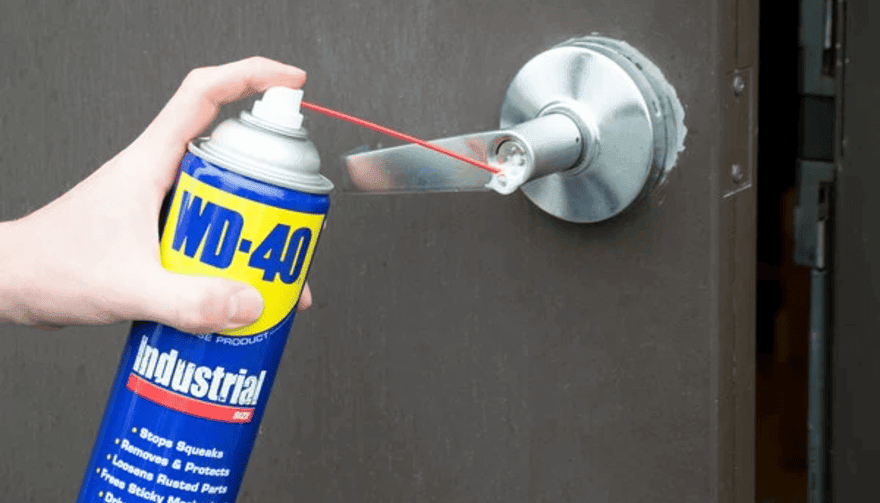Regular lock maintenance is essential to prevent key jamming or lock failure. Proper lubrication reduces wear and tear, ensures smooth operation, and extends the lifespan of your locks. A well-lubricated lock decreases the risk of your key getting stuck or breaking inside the lock—an inconvenient and costly problem. At MR-KEY, we understand the importance of well-maintained locks and want to help you keep yours in top condition.
How Often Should You Lubricate Your Locks?
For most locks, lubricating them every three to six months is sufficient. However, locks exposed to extreme weather conditions—such as those on towbars, roof racks, or outdoor gates—require more frequent maintenance. Rain, dust, and freezing temperatures can cause internal components to stick, making it difficult to insert or turn the key. If you notice resistance when using a lock, it’s time for lubrication.
What Lubricant Should You Use for Locks?
Choosing the right lubricant is crucial for long-term lock performance. Here are the best options:
• Teflon-based (PTFE) spray – Forms a protective film inside the lock, reducing friction and repelling dust buildup.
• Dry silicone spray – Excellent for outdoor locks as it resists moisture without attracting dirt.
• WD-40 Specialist Dry PTFE or White Lithium Grease – Unlike regular WD-40, these provide long-lasting lubrication and protection against corrosion.
• Graphite powder – A great choice for older locks but should not be used if there’s oil residue inside the lock.
While WD-40 Multi-Use is a quick fix for stuck locks, it is primarily a cleaner rather than a long-term lubricant. If used, follow up with a dry lubricant to prevent dirt accumulation inside the lock.
How to Lubricate a Lock
If your lock is functioning properly but feels slightly stiff, follow these steps:
1. Clean the Lock – Insert and remove the key a few times to dislodge debris, wiping it clean each time.
2. Apply the Lubricant – Insert the spray straw into the keyhole and apply two short bursts of lubricant.
3. Work the Lock – Insert and turn the key multiple times to distribute the lubricant inside.
4. Wipe Excess Lubricant – Remove any residue from the key and lock exterior to prevent dirt buildup.
For graphite powder, follow the manufacturer’s specific instructions, as overapplication can lead to clumping inside the lock.
Special Care for Towbar and Roof Rack Locks
Locks on towbars and roof racks are exposed to harsher conditions than typical door locks. To keep them in good shape:
• Regularly inspect them for stiffness or corrosion.
• Apply dry silicone spray or PTFE lubricant for lasting protection.
• If the lock is exposed to frequent moisture, white lithium grease offers superior water resistance.
Lock It in: The Key to Long-Lasting Security
Regular lock maintenance is a small effort that prevents big problems. By keeping your locks clean and properly lubricated—especially those exposed to the elements—you can avoid costly repairs and ensure they function smoothly for years.
For high-quality lock maintenance products, visit MR-KEY and keep your locks in perfect working condition. A little maintenance goes a long way in ensuring security and peace of mind!


_1751630541.jpg)
_1751539001.jpg)
 (1)_1736345149.jpg)
_1736342764.jpg)